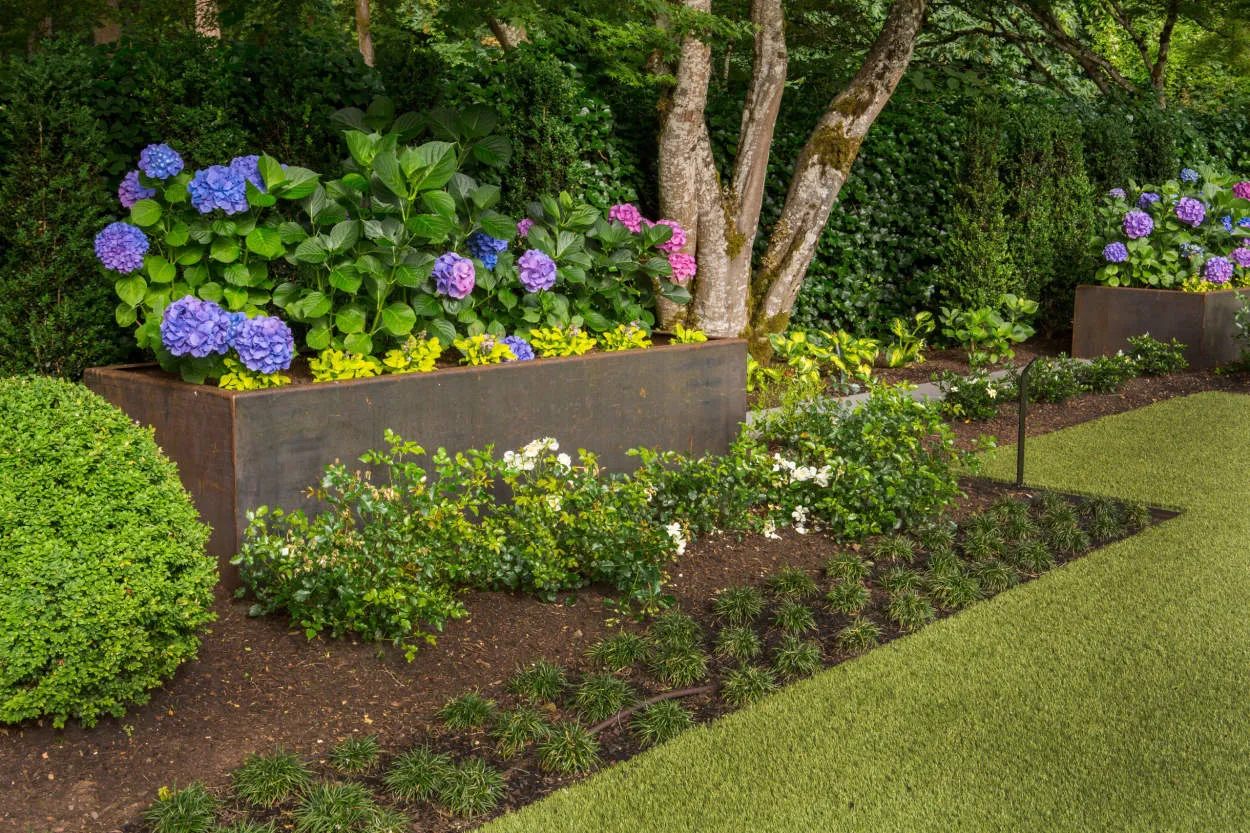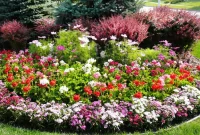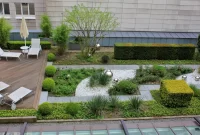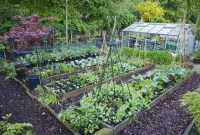If you’re passionate about living sustainably and want to reduce your carbon footprint, creating a sustainable home garden is the way to go. Not only does it provide you with fresh produce, but it also promotes biodiversity, reduces waste, and contributes to a healthier environment. Discover how to create your own sustainable oasis right in your backyard!
The Principles of Sustainable Gardening
Sustainable gardening is a practice that focuses on creating a garden that is not only aesthetically pleasing but also environmentally friendly. By following the principles of sustainable gardening, you can create a home garden that is in harmony with nature and promotes a healthy ecosystem. Here are the key principles to keep in mind:
1. Use Native Plants
Choose plants that are native to your region as they are adapted to the local climate and require less water, fertilizer, and pesticides. Native plants also provide food and shelter for local wildlife, supporting biodiversity in your garden.
2. Conserve Water
Implement water-saving techniques such as mulching, drip irrigation, and collecting rainwater. Mulching helps retain soil moisture, while drip irrigation delivers water directly to the plant roots, minimizing water wastage. Rainwater collection reduces reliance on treated water sources.
3. Practice Organic Pest Control
Avoid using synthetic pesticides that can harm beneficial insects and pollinators. Instead, opt for organic pest control methods such as companion planting, encouraging natural predators, and using organic pest repellents.
4. Compost and Recycle
Reduce waste and improve soil fertility by composting kitchen scraps and garden debris. Compost enriches the soil with nutrients, enhances its structure, and reduces the need for chemical fertilizers. Also, recycle materials such as plastic pots, containers, and garden waste.
5. Encourage Biodiversity
Create a diverse garden by planting a variety of species. This attracts pollinators, beneficial insects, and birds, who contribute to the health and balance of your garden ecosystem. Include plants that provide food, water, and shelter for wildlife.
6. Practice Proper Soil Care
Maintain healthy soil by adding organic matter, such as compost or leaf mulch, to improve its structure, water-holding capacity, and nutrient content. Use appropriate soil management techniques based on the specific needs of your plants.
7. Conserve Energy
Consider energy-efficient alternatives when designing your garden. For example, use solar-powered garden lights, choose manual or electric tools over gas-powered ones, and utilize natural shade from trees and plants to reduce cooling needs.
By following these principles of sustainable gardening, you can create a beautiful and thriving home garden that positively impacts the environment and contributes to a more sustainable future.
Selecting Eco-Friendly Plants
In creating a sustainable home garden, it is crucial to choose eco-friendly plants that not only beautify your space but also support the local ecosystem. By selecting plants that are native to your region, you can reduce water, pesticide, and fertilizer use, as well as promote biodiversity. Here are some key factors to consider:
1. Native Plants
Native plants are adapted to the local climate and require less maintenance. They have developed natural defenses against pests and diseases, reducing the need for chemical interventions. Additionally, native plants provide food and habitat for local wildlife, supporting the overall ecological balance.
2. Drought-Tolerant Varieties
Choosing plants that are well-suited to your region’s climate can greatly reduce water consumption. Opt for drought-tolerant varieties that have evolved to thrive in arid conditions. These plants have deeper roots and are better equipped to withstand periods of drought, meaning they can subsist on minimal watering.
3. Perennials
Perennial plants are an excellent choice for an eco-friendly garden, as they come back year after year, reducing the need for replanting. This not only saves time and effort but also minimizes the resources required for purchasing new plants each season.
4. Companion Planting
Integrate companion plants into your garden to support the health and growth of your crops naturally. Certain plant combinations deter pests and attract beneficial insects, fostering a balanced and sustainable ecosystem. For example, marigolds can repel nematodes, while basil attracts bees for pollination.
5. Organic Gardening Practices
Avoid using synthetic pesticides and fertilizers in your garden, as they can harm beneficial insects, soil health, and water quality. Instead, prioritize organic gardening practices such as composting, mulching, and using natural pest control methods. This promotes a healthier environment both within your garden and beyond.
6. Avoid Invasive Species
When selecting plants for your garden, be cautious of invasive species that can outcompete native plants and disrupt the local ecosystem. Check with local gardening organizations or nurseries for a list of invasive plants in your area.
By consciously selecting eco-friendly plants, you can create a sustainable home garden that harmonizes with nature and contributes positively to the environment. Remember to always research and consult local experts to ensure the best choices for your specific region.
Water Conservation Techniques
Water conservation is crucial for maintaining a sustainable home garden. By implementing the following techniques, you can reduce water waste and promote a healthier environment:
1. Mulching
Applying a layer of mulch around your plants helps retain moisture in the soil, reducing the need for frequent watering. Organic mulches such as wood chips or straw also improve soil quality over time.
2. Drip Irrigation
Consider installing a drip irrigation system that delivers water directly to plant roots. This method significantly reduces evaporation and delivers water more efficiently than traditional sprinklers.
3. Rainwater Harvesting
Collecting rainwater is an effective way to conserve water. Install rain barrels or tanks to capture rainwater from rooftops. It can be used for watering plants during dry periods.
4. Group Plants by Water Needs
Organize your garden based on water requirements. By grouping plants with similar needs together, you can ensure efficient watering and prevent over-watering or under-watering.
5. Companion Planting
Planting compatible species together encourages natural pest control and reduces the need for chemical pesticides. This technique helps plants thrive with less water compared to monoculture.
6. Proper Timing
Water your garden in the early morning or evening when temperatures are cooler to minimize evaporation. Avoid watering during windy conditions that can cause water to be wasted.
7. Xeriscaping
Xeriscaping is a landscaping method that utilizes drought-resistant plants and requires minimal irrigation. By incorporating this technique, you can create an attractive garden while conserving water.
By implementing these water conservation techniques, you can create a sustainable home garden that thrives while reducing water usage. Not only will this benefit the environment, but it will also save you money on water bills.
Composting and Natural Pest Control
When it comes to creating a sustainable home garden, two essential practices to incorporate are composting and natural pest control techniques. These methods not only promote a healthy and productive garden, but also reduce the environmental impact of traditional gardening methods.
Composting
Composting is the process of converting kitchen scraps, yard waste, and other organic materials into nutrient-rich soil. By composting, you can minimize waste, improve soil quality, and reduce the need for chemical fertilizers. Start by collecting vegetable peelings, coffee grounds, tea leaves, and garden trimmings, and create a compost pile or use a compost bin. Make sure to turn the compost regularly and maintain the right moisture level to accelerate decomposition. In a few months, you’ll have organic compost ready to be used in your garden.
Natural Pest Control
Chemical pesticides can harm beneficial insects, contaminate the soil, and affect human health. To manage pests in your garden without relying on harmful chemicals, opt for natural pest control methods. Encourage beneficial insects such as ladybugs, lacewings, and bees by planting native flowers and providing shelter. Use physical barriers like netting or row covers to protect crops from pests. Additionally, companion planting, where certain plants are grown together to repel pests, can be an effective strategy. For example, marigolds planted among vegetables can deter pests such as nematodes.
Furthermore, practicing crop rotation and proper plant spacing helps prevent the buildup of pests. Removing weeds regularly eliminates hiding places for pests and reduces competition with your plants. Lastly, handpicking pests from plants or using organic insecticidal soaps are safe and sustainable ways to control infestations.







